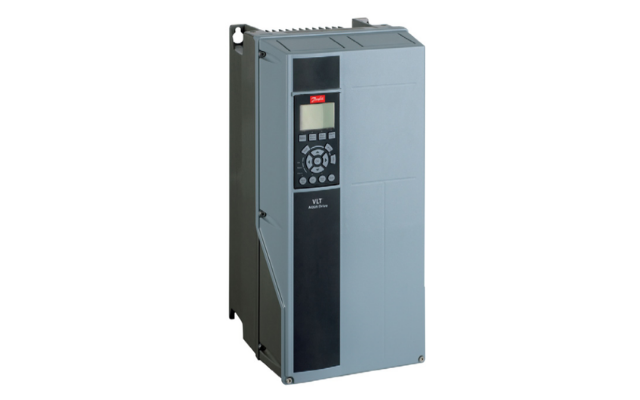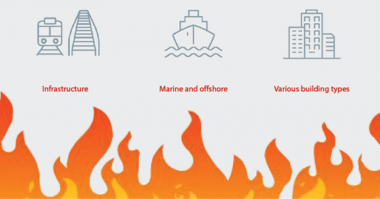Known as the “Land of 10,000 Lakes,” Minnesota takes its environment and its water resources seriously. That’s why the City of Mayer, a town of about 1,800 in Carver County, Minn., was proud to have its Wastewater Treatment Plant Operator recognized by the Minnesota Rural Water Association (MRWA) for implementing innovative energy savings using Danfoss VLT® AQUA Drives.
The recipient of the award, Greg Kluver, had worked for Mayer in several capacities since 1990 and is currently the Waste Water Contract Operator. “Over the last few years, municipal budgets are under a lot of pressure,” he observes. “In 2010, I proposed that Mayer invest in variable frequency drives to cut the cost of running the wastewater treatment plant’s biggest energy users — blower motors.”
The plant employs three blower motors to perform one of the most important parts of the wastewater treatment process: aeration. Blowers agitate the sewage and inject oxygen into the water so microbes can remove contaminants. But only the right amount of oxygen will do — too little will not allow the microorganisms to break down organic waste; too much will cause the microbes to cannibalize themselves and die off.
Kluver notes that the City of Mayer’s Water Treatment Plant is designed as an Extended Aeration Activated Sludge Facility — which depends on maintaining the proper balance of microorganisms.
In this plant design, the incoming wastewater — the influent — flows into a pre-treatment building to remove physical material, such as grit and sand. Then, primary treatment is begun. Sediment is settled out, and phosphorus is detained by using an anaerobic and anoxic tank in which the bacteria, in the absence of oxygen and nitrates, accumulate phosphorus.
In the secondary treatment phase, the wastewater flows into two aeration basins, where it is continuously agitated and injected with air. The added oxygen triggers the microorganisms’ aerobic digestion process, feeding on the organic matter and removing nitrogen and ammonia. As the microbes flourish in the oxygen and nutrient-rich liquid, they clump (flocculate) together to form a mass of organic solids, known as a “biomass.” This biomass is also called a “mixed liquor.”
The mixed liquor flows to a secondary clarifier (settling tank), where the activated sludge settles out. A portion of the sludge is returned to the head of the aeration basins to maintain a high population of bacteria to break down the organics and to maintain a constant flow rate. The remaining sludge is pumped to a digester, where it is stored, then trucked in spring and fall to another facility for final treatment and disposal.
The remaining clear liquor passes through bridge sand filters and ultraviolet disinfection before being discharged to the South Fork of the Crow River.
Together, the two concrete aeration basins can handle a total combined volume of about 320,000 gallons per day. To supply enough oxygen into the wastewater, blowers must deliver up to 650 CFM of air.
“We have three, 40-hp rotary blower motors configured in parallel,” says Kluver. “They are 60-Hz Aerzen positive displacement root blowers. The blowers run one at a time for 24 hours per day, for a pre-determined time period; then we cycle on the next blower to equalize the run time between all three.”
“This application requires constant torque (CT). In CT applications, torque is directly related to current. That means a variable frequency drive (VFD) maintains CT by increasing the voltage in a linear manner as speed increases.”
The VFD slowly ramps the voltage to bring the blower up to speed. The Danfoss VLT® AQUA Drive can be programmed to receive a signal from the dissolved oxygen (DO) sensor and adjust blower speed accordingly.
“The great thing about a positive displacement blower, as soon as the rotor turns, it is pushing air into the process,” notes Kluver. “This creates an almost perfect linear performance curve. The higher the voltage, the faster the rotor speed, and the greater the airflow. On the other hand, if we only need half the air, we can reduce the blower speed and the horsepower by 50 percent and cut the kW in half.”
Kluver contacted Brian Peterson of Schwab, Vollhaber and Lubratt, Inc. (SVL), of Shoreview, Minn., near St. Paul, with a VFD specification. Peterson recommended three Danfoss VLT® AQUA Drives.
 “The Danfoss VLT® AQUA Drive is built in the U.S.A. in Loves Park, Illinois, which is practically next door,” says Peterson. “Unlike other variable frequency drives, these units are dedicated for water and wastewater applications. That simplifies implementation. It’s got a lot of built-in features — from a cascade controller to RFI filter to input choke to real time clock.”
“The Danfoss VLT® AQUA Drive is built in the U.S.A. in Loves Park, Illinois, which is practically next door,” says Peterson. “Unlike other variable frequency drives, these units are dedicated for water and wastewater applications. That simplifies implementation. It’s got a lot of built-in features — from a cascade controller to RFI filter to input choke to real time clock.”
“But on a basic positive displacement blower project like this one, we simply took advantage of the built-in water/wastewater intelligence. We were able to input the dissolved oxygen (DO) value into the on-board closed loop control of the drive. The VLT® AQUA Drive display then shows the actual DO value, DO set point, motor speed, and kW consumption. Consequently, an integrator wasn’t really needed, which helped with cost savings.”
“Another cool feature is the VLT® AQUA Drive’s Payback Time Indication,” adds Kluver. “We entered the price of electricity, which is about seven cents per kilowatt hour, the equipment investment, and the load profile for the application. The VLT® AQUA Drive comes with software that continuously calculates the remaining payback time right on the display. It’s a great way to show how energy savings add up and when the investment is paid back.”
Kluver also appreciated that, when considering the implementation, a Danfoss VLT® AQUA Drive was lent as a loaner.
“SVL and Danfoss were really easy to work with. The loaner let us verify that the drive would work with the Aerzen blowers — and that we could get the energy efficiency we were hoping for,” says Kluver.
The drives are enclosed in NEMA/UL Type 1 cabinets in the blower room. No special ventilation was used.
“That raised a question about how well the drive would handle high temperatures,” notes Peterson. “The drive is rated up to 50 degrees C (122 degrees F), thanks to a heatsink built into the chassis. I’m happy to say that even with record-breaking heat this summer, there was no problem.”
In calculating the return on investment, Kluver explains, “We calculated the potential electric savings assuming that kW reductions would decrease in linear proportion as horsepower decreased. Based on those assumptions, we calculated that air flow reductions would cut kW costs by $6,342.00 per year.”
“Regarding equipment cost, we could subtract a hefty VFD rebate from the utility, Xcel Energy. For all three blowers, we received $8,341.00. That lowered our cost to give us an estimated return on investment of about 10 months.”
As it turns out, Kluver discovered that a restriction was designed into the original blower system to reduce excess air volume. Removing that restriction decreased the load on the motors, which would have improved the payback — except more flow was required than originally planned to maintain the necessary level of turbulence and aeration. In the end, the payback period was extended to about 15 months.
“That’s still very respectable,” notes Kluver. “Especially now with today’s higher energy prices, we’re saving the City of Mayer about $8,738.00 in annual electricity costs. And by providing a robust product that’s easy to maintain and operate, we can count on Danfoss VLT® AQUA Drive technology to keep rewarding us with energy savings.”





Comments